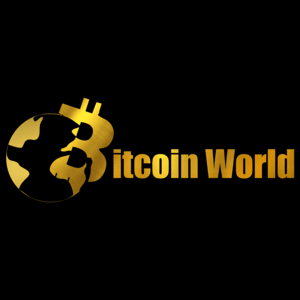Trump’s Frustration: Why Talking to Federal Reserve Chairman Jerome Powell Felt Like Hitting a Wall
8 min read
In the complex dance between political leadership and independent economic bodies, moments of friction are inevitable. One such notable instance occurred during the presidency of Donald Trump, whose candid remarks often sent ripples through financial markets and political circles alike. A particularly memorable quote captured the essence of his frustration with the nation’s top monetary authority: the Federal Reserve, led by Chairman Jerome Powell. During a press conference at the White House, Donald Trump expressed his profound dissatisfaction with the pace and direction of the Federal Reserve’s monetary policy. His words painted a vivid picture of a communication breakdown, stating bluntly that talking to Federal Reserve Chairman Jerome Powell was akin to “talking to a wall.” This strong metaphor highlighted the perceived lack of responsiveness from the central bank to the President’s calls for lower Interest Rates . Understanding the Role of the Federal Reserve and Presidential Expectations To fully grasp the tension described by Donald Trump, it’s crucial to understand the fundamental roles of the Federal Reserve and the President. The Federal Reserve, often called the Fed, is the central banking system of the United States. Its primary mandates are to maximize employment, stabilize prices (control inflation), and moderate long-term interest rates. It operates with a degree of independence from the executive and legislative branches of government, a structure designed to insulate monetary policy decisions from short-term political pressures. Presidents, on the other hand, are typically focused on economic growth, job creation, and maintaining a strong economy during their term. Lower interest rates can stimulate economic activity by making borrowing cheaper for businesses and consumers, potentially leading to increased investment, spending, and hiring. Conversely, higher interest rates can cool down an overheating economy, helping to prevent inflation but potentially slowing growth. During his presidency, Donald Trump consistently advocated for lower interest rates. He argued that the Fed’s policies were too restrictive and hindered economic expansion, especially in the context of his administration’s trade policies and global economic headwinds. He often compared the U.S. economic situation favorably to other nations, questioning why the Fed wasn’t cutting rates more aggressively when other major Central Banks were doing so. Why Did Trump Feel Talking to Jerome Powell Was “Like a Wall”? The feeling of talking to a wall suggests a lack of influence or impact on the other party’s decisions. For President Trump, this sentiment likely stemmed from the Fed’s adherence to its data-dependent approach and its commitment to making policy decisions based on its economic analysis, rather than presidential requests. The Fed, under Jerome Powell, maintained that its decisions were guided by its dual mandate – maximum employment and price stability – and assessments of the economic outlook, not political considerations. Key points contributing to this perception of a “wall” included: Fed Independence: The institutional independence of the Federal Reserve is a cornerstone of its credibility. Chairman Powell and the Federal Open Market Committee (FOMC) make decisions based on economic data and their mandate, not on directives from the White House. This independence, while crucial for long-term economic stability, can sometimes put the Fed at odds with a President seeking specific economic outcomes within their term. Differing Economic Outlooks: While President Trump saw room for aggressive rate cuts to boost growth further, the Fed’s perspective might have been more cautious, perhaps seeing underlying inflation risks or assessing the economy as already operating near full employment. Communication Style: The Fed typically communicates its policy decisions and rationale through official statements, meeting minutes, and congressional testimony. This structured, often cautious, communication style can feel unresponsive compared to the more direct and immediate communication style favored by President Trump. Pace of Action: Monetary policy decisions are often made deliberately, after careful consideration of various economic indicators. President Trump’s desire for quick and significant rate cuts may have clashed with the Fed’s more measured approach to adjusting interest rates. The Global Context: Comparing Central Banks and Interest Rates President Trump’s frustration was amplified by observing the actions of other major central banks around the world. He specifically mentioned the European Central Bank (ECB) and the People’s Bank of China (PBOC) as examples of central banks that were actively lowering their benchmark interest rates. This comparison was central to his argument that the Fed was out of step with global monetary policy trends. Let’s briefly look at the situation of other major central banks during the period when Trump made these comments: European Central Bank (ECB): The Eurozone economy faced slower growth, low inflation (at times even deflationary fears), and external risks like trade tensions. The ECB had already implemented negative interest rates on bank deposits and was considering or implementing further stimulus measures, including rate cuts and asset purchases, to support the economy and push inflation towards its target. People’s Bank of China (PBOC): China’s economy was also experiencing some slowdown, partly due to structural factors and partly impacted by the trade dispute with the U.S. The PBOC utilized various tools, including adjusting its benchmark rates and reserve requirement ratios for banks, to inject liquidity and support lending, aiming to stabilize growth. Other Central Banks: Many other central banks globally were also easing monetary policy or signaling a readiness to do so, reacting to a synchronized slowdown in global growth, trade uncertainty, and subdued inflation pressures in many regions. President Trump viewed these actions as competitive advantages for other economies. Lower interest rates can potentially weaken a country’s currency, making its exports cheaper and more competitive on the global market. He felt the Fed’s relatively higher rates were strengthening the U.S. dollar, making American goods more expensive abroad and potentially undermining his trade objectives. Implications of the Fed’s Stance vs. Global Trends for the Economy and Markets The divergence in monetary policy between the Federal Reserve and other major central banks had several potential implications: Currency Strength: As mentioned, higher relative interest rates typically attract foreign investment seeking better returns, increasing demand for the currency and potentially strengthening it. A strong dollar can be a double-edged sword – it makes imports cheaper for U.S. consumers and businesses but makes U.S. exports more expensive for buyers abroad. Capital Flows: Differences in interest rates and economic prospects influence where international capital flows. If the U.S. offers relatively higher returns (through interest rates or economic growth), capital tends to flow into the U.S., affecting asset prices and exchange rates. Global Coordination: Divergent policies can complicate international economic coordination. While central banks prioritize their domestic mandates, their actions have spillover effects globally. Market Volatility: Uncertainty about monetary policy direction, especially when it clashes with political desires, can increase volatility in financial markets as investors try to anticipate future actions. President Trump’s public criticism of the Fed was unusual and broke with the norm of respecting the central bank’s independence. While presidents often privately express their views on the economy, direct public pressure on the Fed regarding specific rate decisions is generally avoided to protect the institution’s non-political standing. Connecting the Dots: Monetary Policy, Economic Uncertainty, and the Rise of Alternatives (Including Crypto) The environment of global economic uncertainty, trade tensions, and diverging central bank policies provides a fascinating backdrop for understanding the broader financial landscape. While the direct link between a President’s comments on the Fed and cryptocurrency might not be immediately obvious, the underlying themes resonate within the crypto space. Consider these points: Loss of Faith in Traditional Systems: Public disagreements between political leaders and central bankers, coupled with unconventional monetary policies (like negative interest rates and massive asset purchases), can erode public confidence in traditional financial institutions and fiat currencies. Search for Alternatives: When traditional assets and currencies face uncertainty or potential devaluation due to aggressive monetary easing, investors and individuals may seek alternative stores of value or mediums of exchange. “Hedge” Narrative: Cryptocurrencies, particularly Bitcoin, are sometimes viewed as a potential hedge against inflation and economic instability caused by central bank actions. The finite supply of Bitcoin, for instance, is contrasted with the ability of central banks to increase the supply of fiat currency. Global Liquidity: While the Fed might have been slower to cut rates than others at a specific point, the overall trend among global central banks towards lower rates and increased liquidity contributes to a search for yield and investment opportunities, some of which flow into riskier assets like cryptocurrencies. Therefore, while President Trump’s comments were about traditional monetary policy, the frustration he voiced and the global economic context he described are part of the larger narrative that sometimes drives interest in decentralized alternatives like cryptocurrencies. The perceived inflexibility of traditional institutions (the “wall”) and the differing approaches of major Central Banks highlight the complexities and potential fragilities within the global financial system. Challenges and Insights from the Trump-Powell Dynamic The public dynamic between Donald Trump and Jerome Powell brought several challenges and offered insights: Challenge: Undermining Independence: Persistent public criticism from the President risks undermining the perceived independence and credibility of the Federal Reserve, which could make its job of managing the economy harder in the long run. Challenge: Market Confusion: Conflicting signals from political leaders and the central bank can create confusion and uncertainty in financial markets. Insight: Transparency (of Disagreement): While contentious, the public disagreement provided unusual transparency into the differing perspectives on economic policy between the White House and the Fed. Insight: Importance of Communication: It underscored the critical importance of clear and consistent communication from the Federal Reserve to manage expectations and maintain confidence. Insight: Global Interconnectedness: The comparison with other Central Banks highlighted how interconnected the global economy and monetary policies are. Conclusion: The Enduring Tension Between Politics and Monetary Policy Donald Trump’s memorable description of talking to Federal Reserve Chairman Jerome Powell as being “like talking to a wall” encapsulated a period of significant tension between the White House and the U.S. central bank. It stemmed from differing views on the appropriate level of Interest Rates and the pace of monetary policy adjustments, set against a backdrop of global economic shifts and the actions of other major Central Banks like the ECB and PBOC. This episode served as a stark reminder of the delicate balance required to maintain the independence of the Federal Reserve while acknowledging the President’s legitimate interest in the nation’s economic health. While the direct impact on cryptocurrencies is indirect, the underlying themes of trust in institutions, the search for stable value in uncertain times, and the consequences of global monetary policy divergences continue to be relevant factors observed by participants in the crypto market. Ultimately, the dynamic between Donald Trump and Jerome Powell highlighted the inherent friction that can arise when political goals meet the data-driven, mandate-focused approach of an independent central bank, a tension that remains a key feature of economic governance worldwide. To learn more about the latest global economic trends and their potential impact on markets, explore our articles on key developments shaping monetary policy and finance .

Source: Bitcoin World


